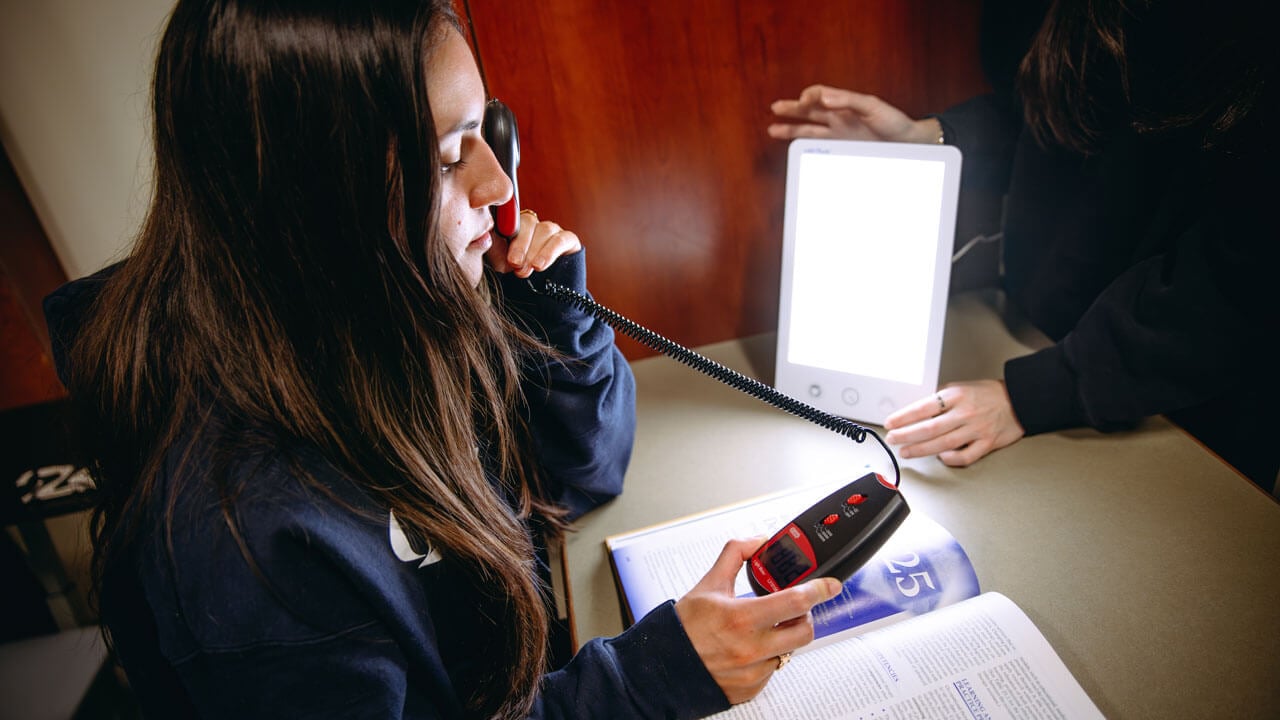
Occupational therapy capstone research helps Bobcats rest easy
April 22, 2024

April 22, 2024

Professor of Occupational Therapy Martha Sanders was the faculty lead for the capstone research study. The study was geared to offer assistance to college students as they often experience dysregulated sleep that impacts school, grades and mood.
“Our sleep patterns are impacted by regular exposure to bright light in the morning, like the sun, that helps to set regular sleep-wake patterns," said Sanders. "However, many college students do not receive adequate morning light to help set regular sleep patterns."
Student researchers gathered control groups and experimental groups of students to test a lighting intervention as part of the study. Participants in the experimental group were equipped with a lightbox, based to help research the correlation between circadian lighting and sleep. The intent of circadian lighting design is to work in harmony with the body’s internal clock by providing ample access to daylight or when daylight is unavailable, modulating the intensity, spectrum and color of electric light in symbiosis with the natural lighting cycle.
Occupational therapy students met with all research subjects three times over the course of the study. They set up baselines, coached participants on the use of an actigraphy, provided tips to assist with sleep hygiene and gathered data as the study unfolded. A participant post-test and semi-structured interview at the end of the study completed the research.
Master of Occupational Therapy students Michelle Galdi ’23, MOT ’25, and Brianna Gibson ’23, MOT ’25, made up one of the teams of researchers involved in the study. They both had specific reasons for selecting this topic from a number of choices for their research project.
“First, I have bad sleep, so I thought I could learn so much from this,” said Galdi. “Sleep really impacts your daily functioning so much more than you think. I think it’s a very unconscious practice. Just seeing how this lighting intervention would affect college students' sleep was an interesting learning opportunity.”
“I thought it was very interesting because it was applicable in our own lives as college students," said Gibson. "Sleep has a major impact on everyone’s daily activities. I was very curious to learn more about how it can affect people differently and what we can do to promote better sleep.”
These discussions also revealed some common reasons why students may not be getting enough sleep.
“We found a lot of college students don’t use night shift on their phones because they don’t know about it," said Gibson. "It eliminates the blue lighting coming from your phone or your iPad. There was also a lot of education on how exercise and nutrition can impact your sleep, which can go unrecognized by many people. Those were some common issues that were brought to light for us.”
Part of the challenge the team met was successfully working changes into busy college student schedules, such as finding time to use the light box.
“When we were introducing the light box, we really wanted them to implement it into their daily routine instead of something they had to add,” said Galdi. “So if they were already doing homework in the morning, then they could use the light box while doing their homework. Or while they did their makeup in the morning or brushed their hair – just little things.”
Galdi said she was impressed to learn that the lighting exposure did appear to make a difference, for the better.
“Over the summer, I did fieldwork with older adults with chronic conditions and sleep was one of the sessions I ran," Galdi said. "We talked about all these different sleep hygiene techniques, but we never once mentioned lighting. I think this is an emerging new strategy that definitely needs more research and can be used in the future for a lot of populations.”
Galdi and Gibson said it was gratifying to be able to put their occupational therapy skills to work to help their peers through this process.
“Seeing the results and the progression has been really rewarding,” said Galdi. “Whenever we’re in fieldwork, it’s mostly observing a therapist doing their interventions on clients. This is so much more hands-on and personal to us because we’re actually implementing these interventions and seeing the results. It makes it that much more meaningful.”
Among the many opportunities Quinnipiac OT students encounter, this research project stood out, said Galdi.
“Occupational therapy is a very personal profession and sleep is just another one of those very personal occupations," said Galdi. "So it’s really interesting to discuss with college students about their specific routines, habits and sleep schedules as well as the little things they do before they go to bed and when they wake up. It’s very rewarding."
Quinnipiac Today is your source for what's happening throughout #BobcatNation. Sign up for our weekly email newsletter to be among the first to know about news, events and members of our Bobcat family who are making a positive difference in our world.
Sign Up Now